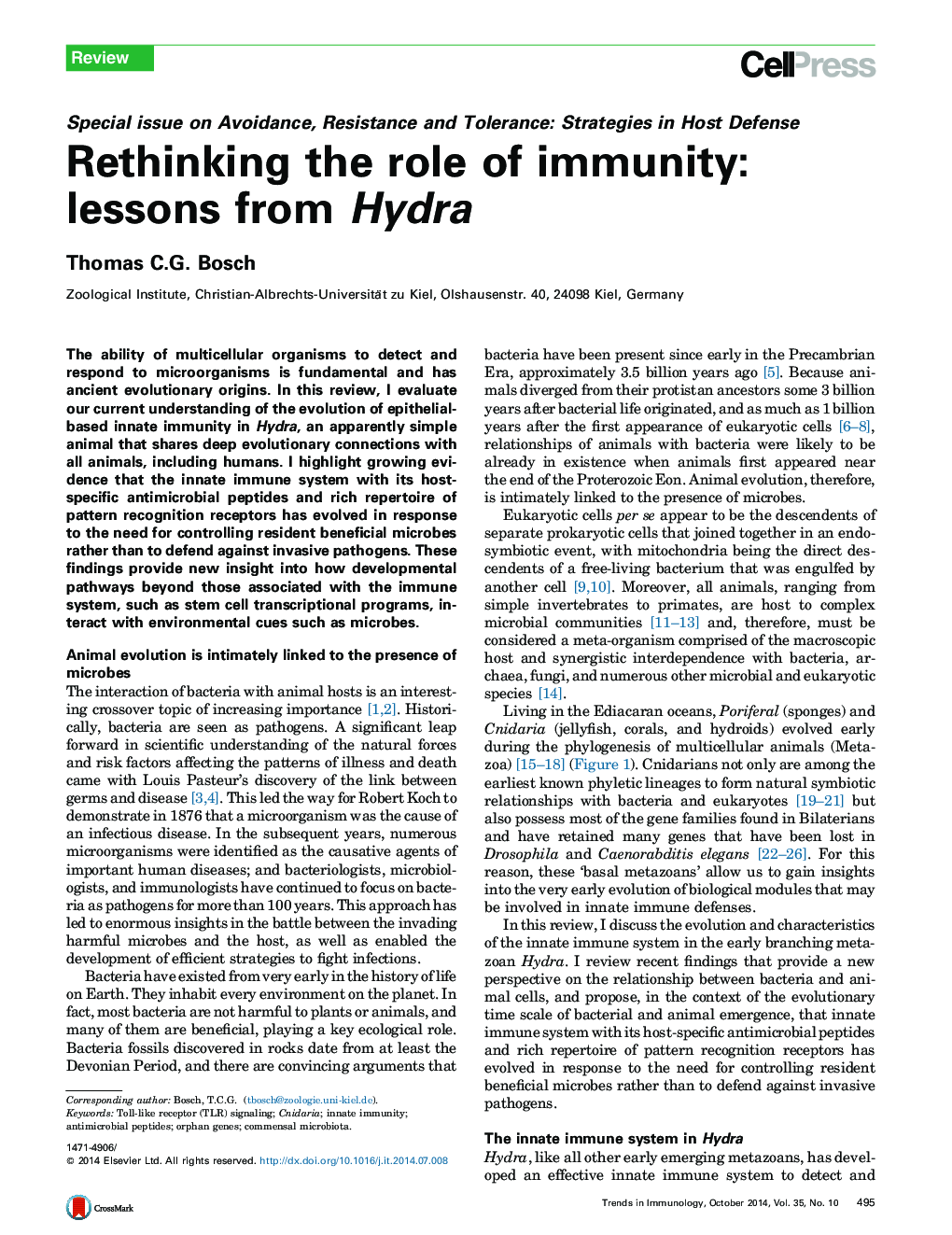| Article ID | Journal | Published Year | Pages | File Type |
|---|---|---|---|---|
| 4359859 | Trends in Immunology | 2014 | 8 Pages |
•The hydra immune system evolved because of the need to control resident microbiota.•Defense against invasive pathogens is secondary to the need to regulate commensals.•Antimicrobial peptides have regulatory roles in host–microbe homeostasis and adaptations.•Developmental pathways (e.g., FoxO) interact with environmental cues such as microbes.
The ability of multicellular organisms to detect and respond to microorganisms is fundamental and has ancient evolutionary origins. In this review, I evaluate our current understanding of the evolution of epithelial-based innate immunity in Hydra, an apparently simple animal that shares deep evolutionary connections with all animals, including humans. I highlight growing evidence that the innate immune system with its host-specific antimicrobial peptides and rich repertoire of pattern recognition receptors has evolved in response to the need for controlling resident beneficial microbes rather than to defend against invasive pathogens. These findings provide new insight into how developmental pathways beyond those associated with the immune system, such as stem cell transcriptional programs, interact with environmental cues such as microbes.
